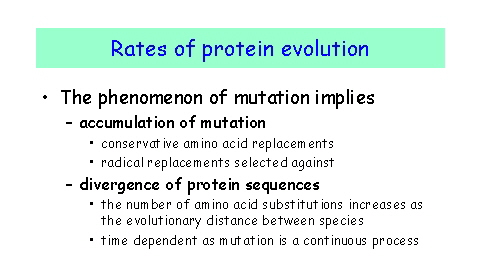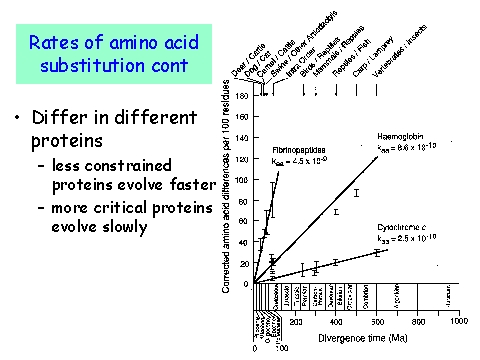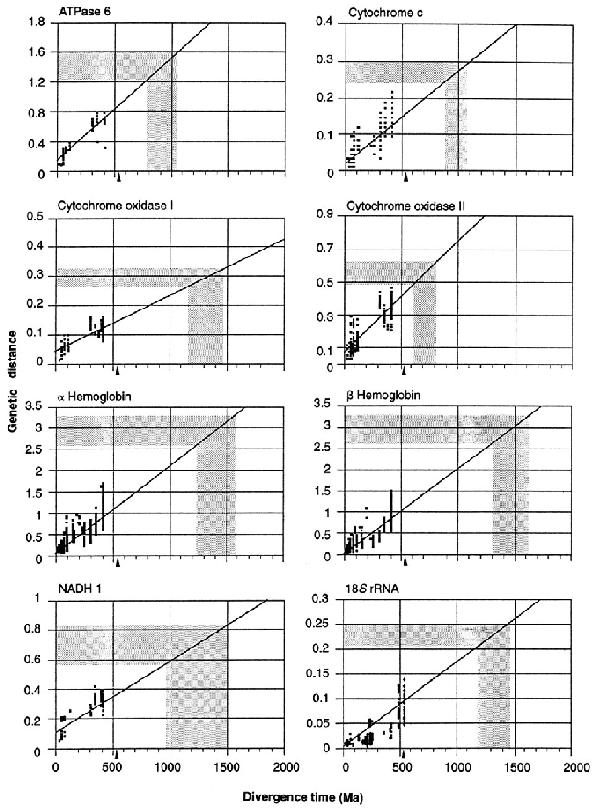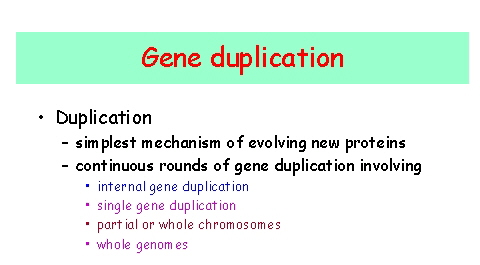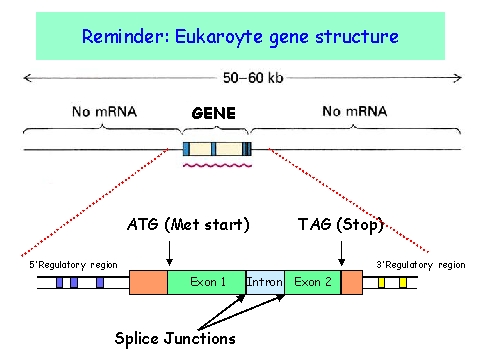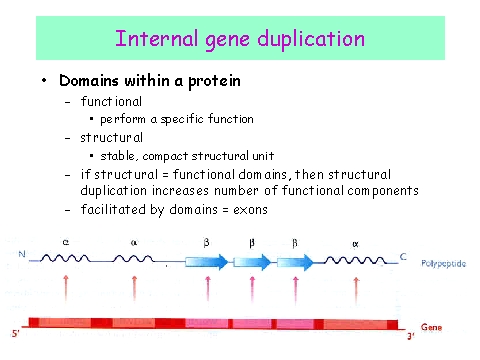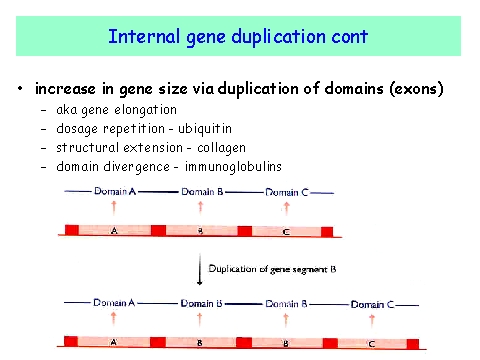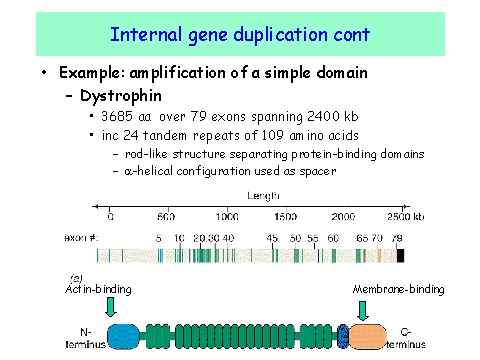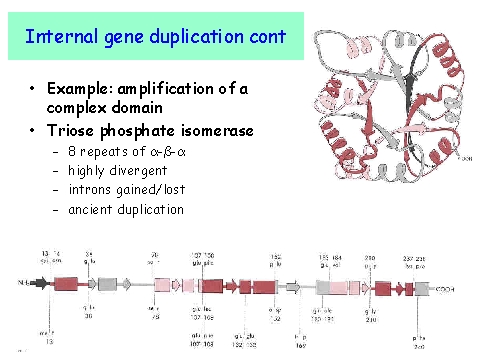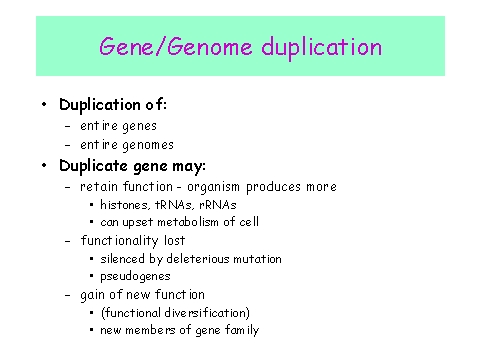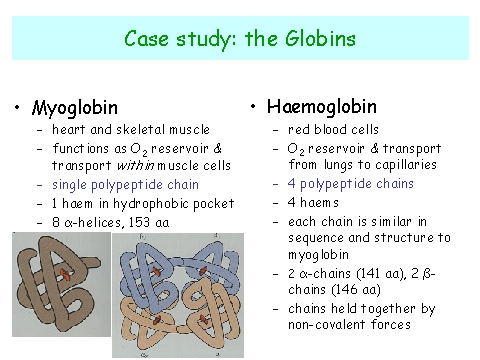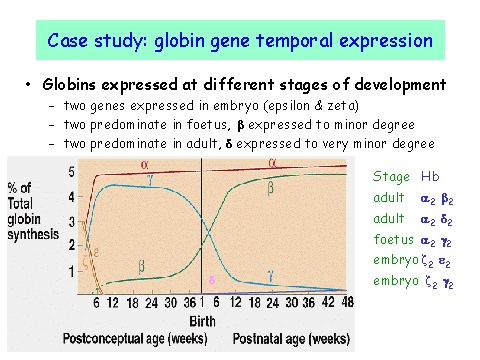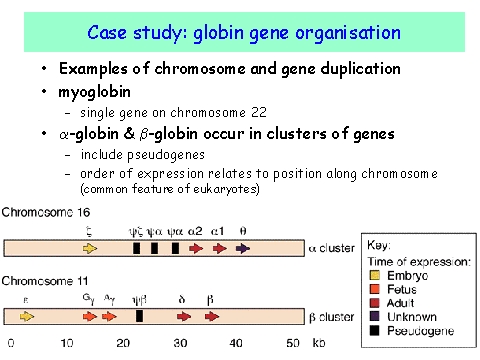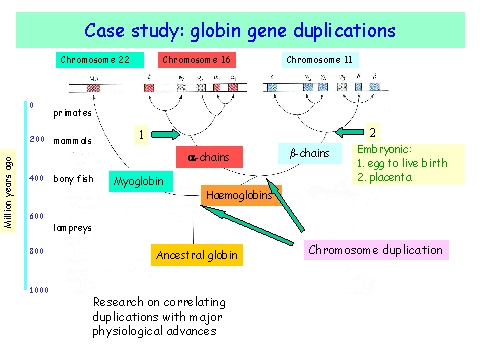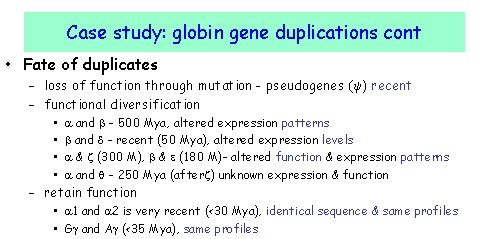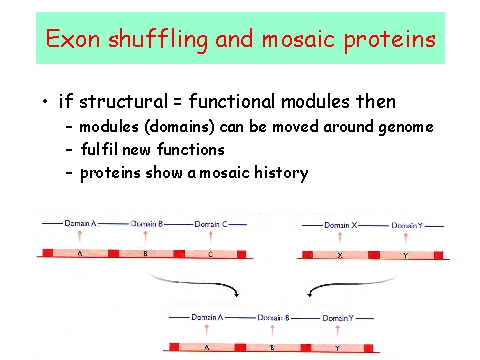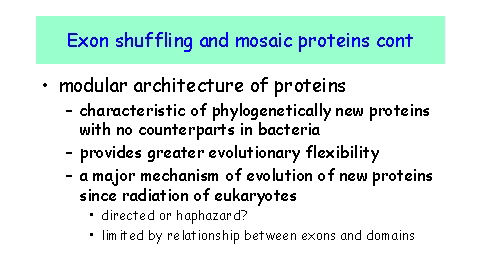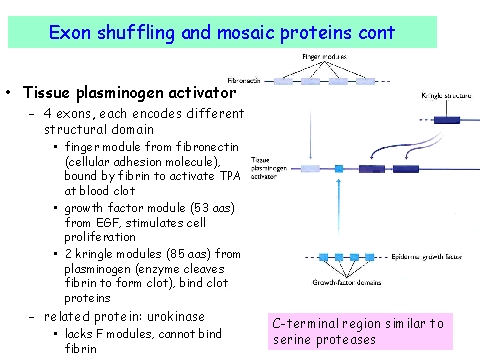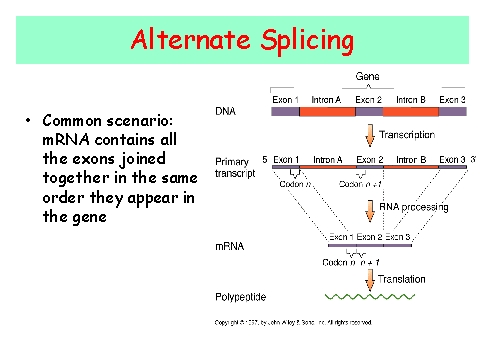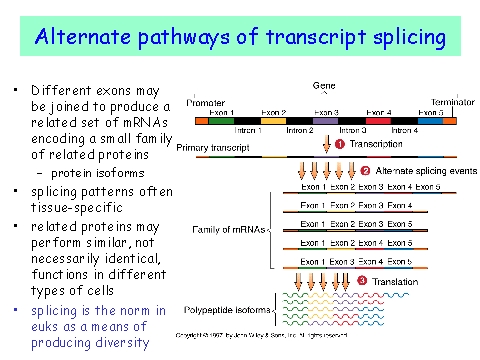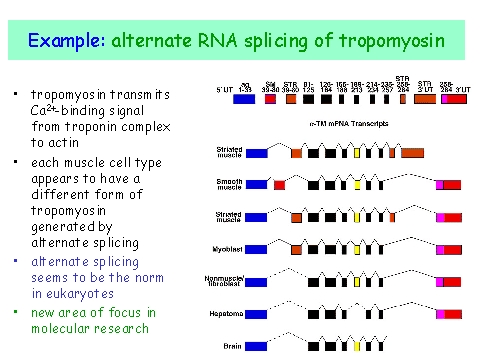|
Protein Evolution
Much of the material in this lecture was borrowed from the following site.
http://www.life.sci.qut.edu.au/collet/608_l11/sld005.htm
Different proteins mutate at different rates.
Science. Volume 274, Number 5287, Issue of 25 Oct 1996, pp. 568-573.
Gene Duplication Provides Template for New Proteins to Evolve
Domains are often contained on Exons. Duplication of an exon leads to duplication of the domain .
Gene and Genomes can duplicate: starting point for evolution of new protein families
Duplication and mutation can explain protein family evolution, but not the immense diverstiy observed in eukaryotic proteins. Domain shuffling = Exon shuffling.
Introns provide site for recombination without worrying about changing reading frames. One explanation for eukaryotes tolerating introns and other ``useless" DNA.
In addition, we can change how we splice mRNA, giving different combinations of proteins from one mRNA.
|


